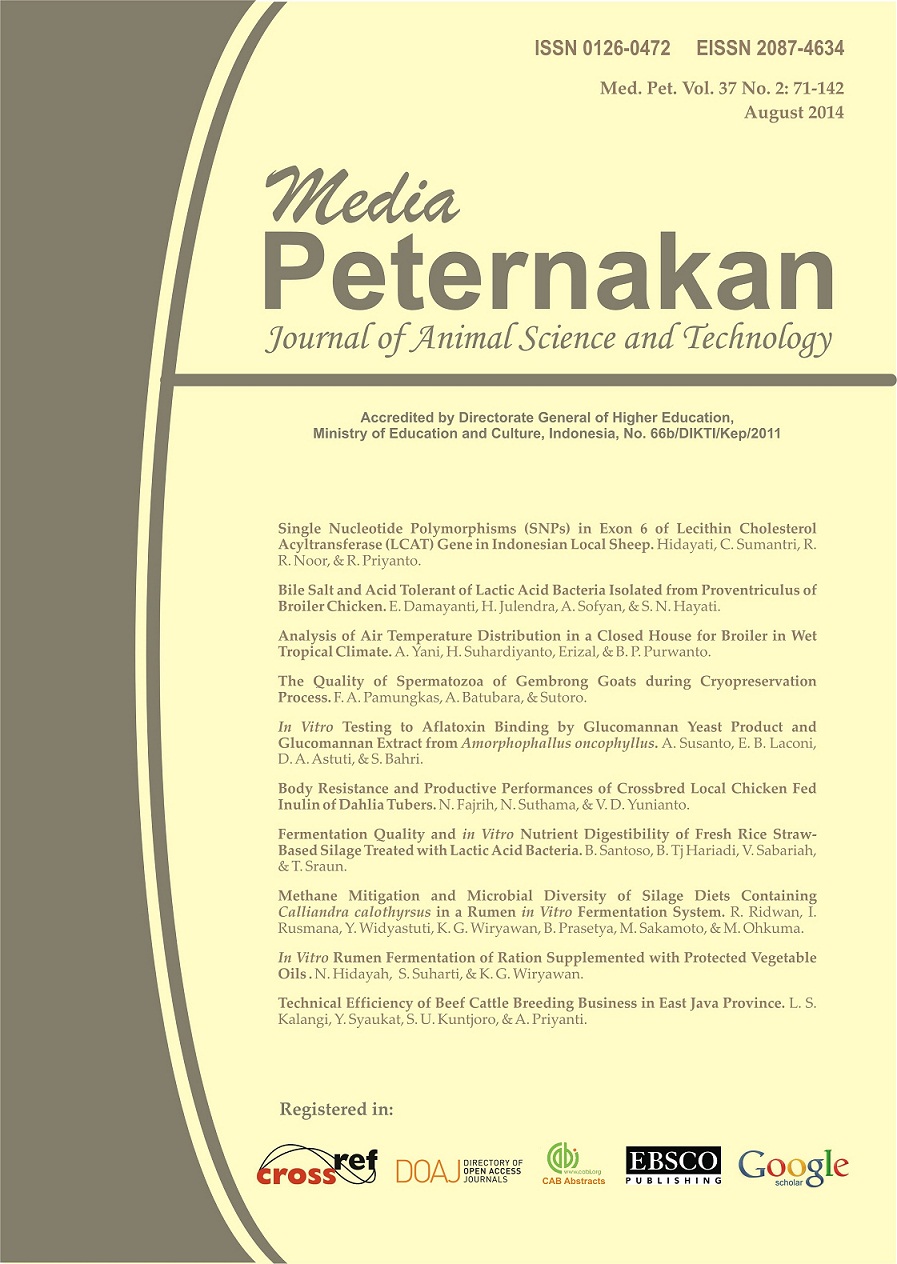Technical Efficiency of Beef Cattle Breeding Business in East Java Province
DOI:
https://doi.org/10.5398/medpet.2014.37.2.136Abstract
The objectives of this research were to compare technical efficiency of beef cattle business operating in lowland and upland areas of East Java and to identify and analyze factors affecting the technical efficiency as well as inefficiency of that business. A survey was conducted to 89 farmers in the lowland area of Probolinggo District and 97 farmers in the upland areas of Malang Districts during the period of February-March 2013. Results of stochastic frontier production function with MLE method showed that the average technical efficiency in lowland area was higher (80%) compared to that in upland area (64%). The results indicated that beef cattle production was highly significant and positively influenced by total of grasses and forages, rice straw, feed supplements, stock of cattle, labor time allocation and service per conception. However, location of the business, whether in lowland and upland areas was a significant factor that could increase the efficiency. Some factors that could significantly reduce the technical inefficiency of beef cattle business were: labor force in family, education level, proportion of beef cattle income to total household income, age of cattle sold, cattle health examination, ownership status of the cattle, and gender. Therefore, (1) the existing farmers group should be improved their role to facilitate trading of cattle feed, and (2) the government should facilitate the farmers in the provision of funding tu buy beef cattle with a subsidized interest rate, so the farmers will be more enthusiast in taking care of their cattle, thus could improve their production efficiency.Downloads
Download data is not yet available.
Downloads
Published
2014-09-25
Issue
Section
Articles



